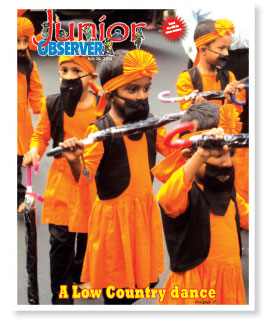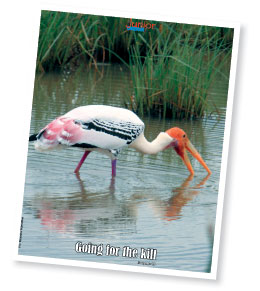|
Cover:

A Low Country dance
The Nagoya Navithasa Kindergarten in Ranpokunugama in Nittambuwa held
it's annual pageant in Ranpokunugama. Children from the Manel class
(Classes in this school are given the names of flowers) performed the
Vadigapatuna, Low Country dance to an enthralling audience.
Back Cover:

Going for the kill
Our staff photographer, Nissanka Wijeratne captured this lone painted
stork trekking its way in a lagoon in the Bundala National Park looking
for food. The Bundala National Park is perhaps the most important
wetland in Sri Lanka for resident and migratory birds.
It is famous for its aquatic birdlife which feed on the rich harvest
provided by the numerous lagoons throughout the park. The park covers
some 6,216 ha and during the winter months more than 160 species of
birds can be found within its boundaries. The park is the last refuge of
the Great Flamingo in this part of the Island and encountering one of
the huge flocks of Flamingo's can be truly breathtaking.
Among some of the birding highlights are the rare Black-necked stork
and the Great Thick-knee, and the more common Painted Storks, Pelicans,
Egrets, Herons, Water Hens, Spoon Bills, Open Bills, Cormorants,
Lapwings and Sand Pipers. Bundala national park is Sri Lanka's only
declared Ramsar wetland and honoured internationally for its significant
role for hosting over 20,000 shorebirds at any given time from August to
April. Every species of water bird found in the country is said to visit
this national park.
Migratory birds such as Asiatic Golden Plover, Avocet, Black Tail
Godwit, Broad Billed Sand Piper, Brown Headed Gull, Caspian Plover, and
many other varieties can be seen in the park.
|


